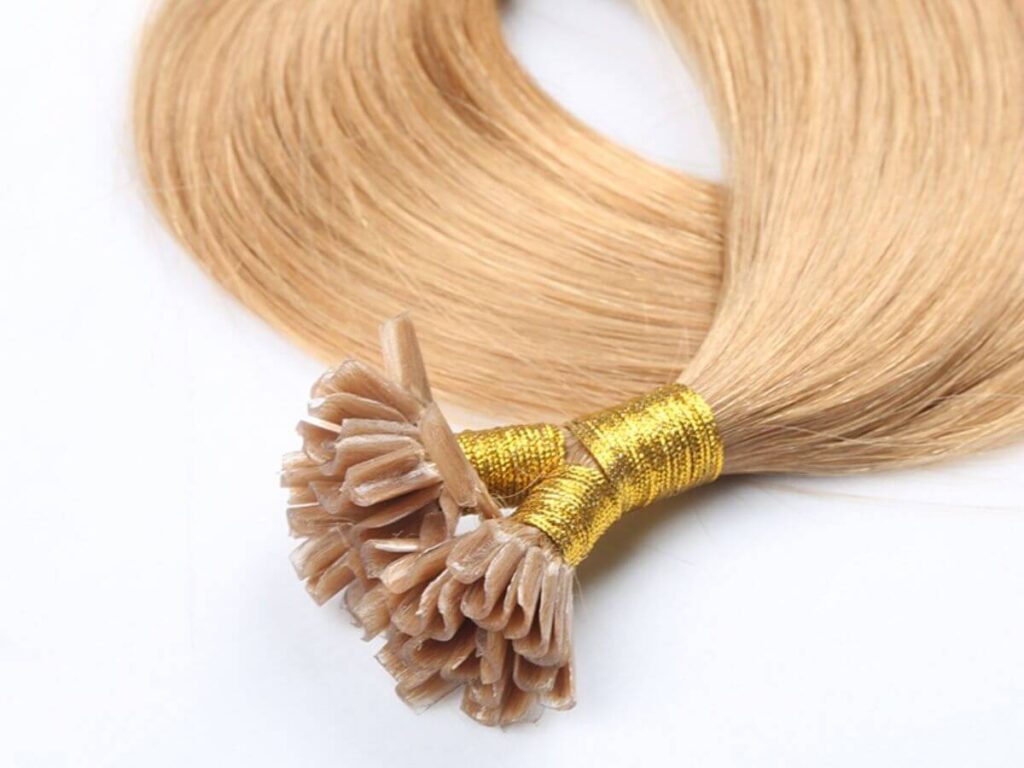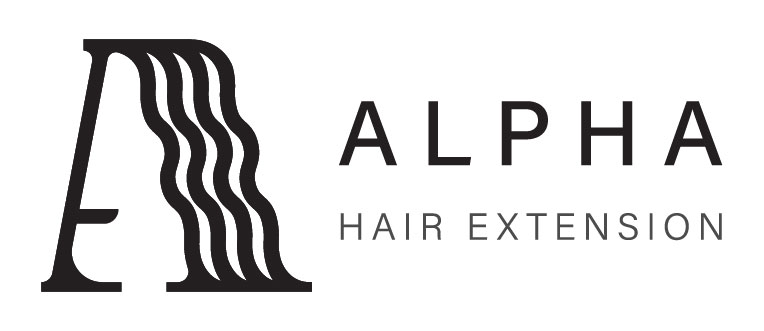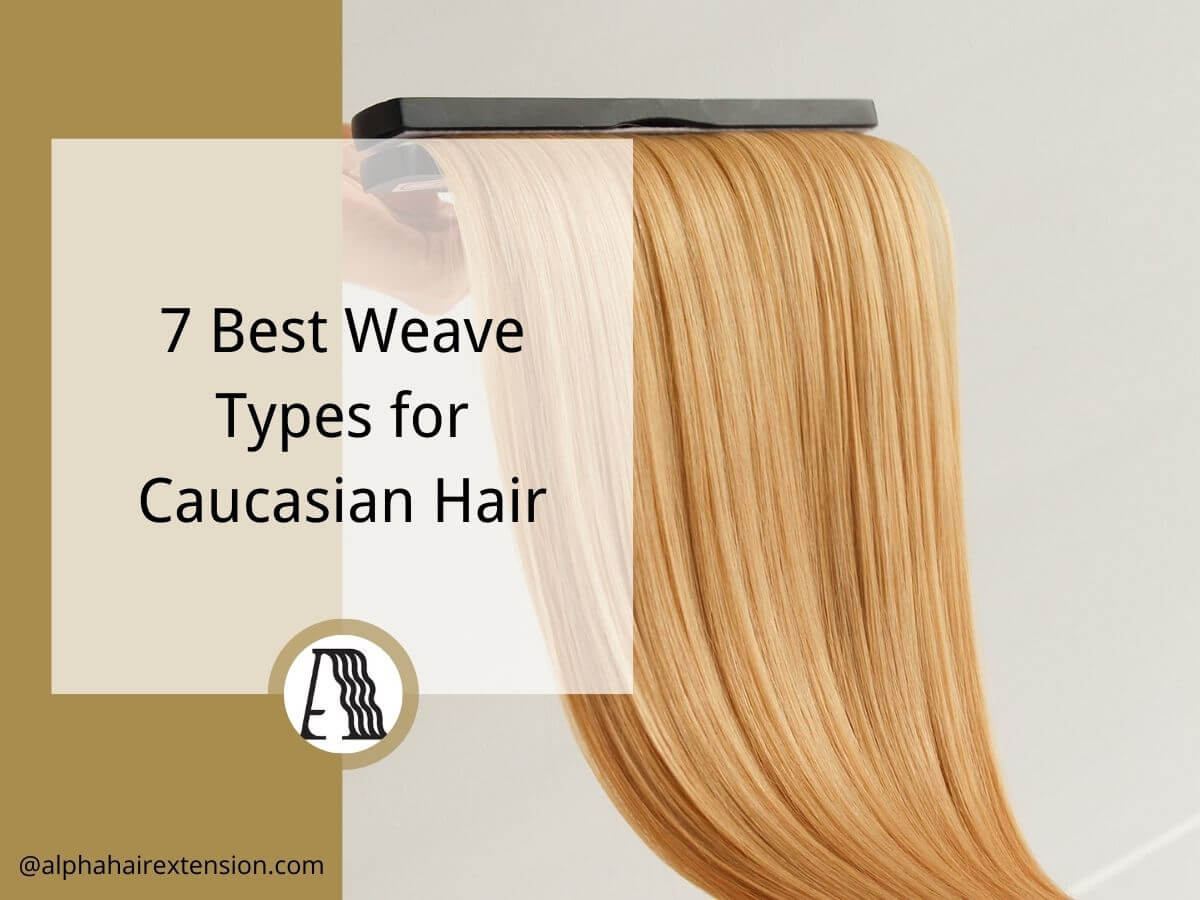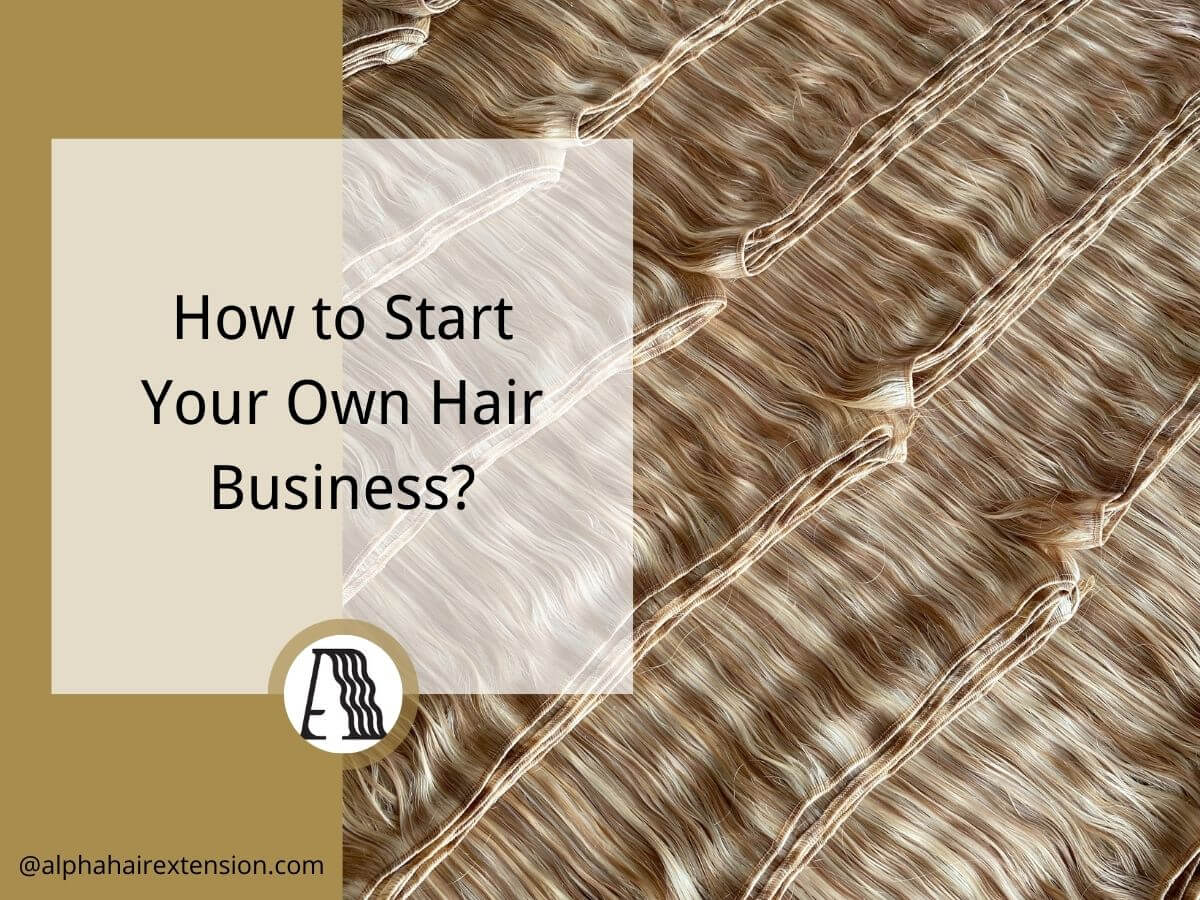A client sat in my chair, holding up 2 different types of extensions. “Which one is better?” she asked, looking confused.
I knew this question all too well.
Over the years, I’ve helped countless clients choose between U-tip and I-tip extensions, and the right answer always depends on their hair type, lifestyle, and maintenance routine.
As a hairstylist who has worked with extensions for years, I’ve tested both types on real clients and seen their long-term effects. I know what lasts, what blends best, and what to avoid.
In this guide, I’ll break down the key differences, benefits, and drawbacks of U-tip and I-tip extensions. Whether you’re a stylist or a salon owner you’ll leave with a clear answer on which option suits your needs.
So let’s get down to it!
1. What is U-Tip Hair Extensions?
If you’re in the hair business—whether you run a salon, sell extensions online, or supply beauty retailers—you’ve probably come across U-tip extensions. Also called keratin bond extensions, these are pre-tipped with keratin adhesive shaped like a tiny “U.”
They’re applied using heat fusion, where a stylist melts the keratin bond and wraps it around small sections of natural hair. Once cooled, the bond hardens, securing the extension in place. This creates a strong, natural-looking hold that can last 3-6 months with proper care.
For salon owners and extension brands, U-tip extensions are a premium choice. They blend seamlessly into real hair, move naturally, and offer a long-lasting, salon-quality finish. But they require professional installation and cannot be reused after removal.
Why Choose U Tip Extensions?
- Semi-permanent hold – Stays in place for months.
- Discreet bonds – Virtually invisible when applied correctly.
- Natural movement – Feels just like real hair.
- Customizable application – Can be placed for volume, length, or highlights.
How to Care for U Tip Extensions
- Avoid oily or sulfate-based products near the bonds.
- Use a soft-bristle brush to prevent pulling.
- Heat styling is fine, but don’t apply direct heat to the bonds.
- Wash hair 2-3 times a week with sulfate-free shampoo.
Pros & Cons of U Tip Extensions
Pros:
- Long-lasting hold (3-6 months).
- Secure attachment that blends into natural hair.
- Great for thick, coarse hair that needs strong bonds.
- Moves naturally and is lightweight.
Cons:
- Requires a professional stylist for installation and removal.
- Cannot be reused after removal.
- Heat application may weaken natural hair over time.
For salons and e-commerce brands, U-tip extensions are a premium offering that clients love for their durability and seamless blend. But are they the right choice for everyone? That depends on hair type, lifestyle, and maintenance routine.

2. What is I-Tip Hair Extensions?
If you’re in the hair business, you’ve probably had clients who want length and volume without glue or heat. That’s where I-tip extensions come in. Also called microbead or micro ring extensions, these are pre-tipped with a small, cylinder-shaped tip that fits inside a tiny bead or ring.
A stylist installs them using a looping tool and clamp—no messy adhesives, no melting keratin. The bead holds the extension in place by clamping onto the natural hair. It’s a method that’s gentle, lightweight, and reusable.
Unlike U-tip extensions, I-tips don’t require heat. This makes them a favorite for clients with fine or sensitive hair who worry about damage. Plus, with proper care, they can be reused, making them a cost-effective choice for salons and extension brands.
Why Choose I-Tip Extensions?
- No heat or glue is needed – Less risk of damage.
- Reusable – Extensions can be reinstalled after removal.
- More flexible – Moves naturally with real hair.
- Lightweight – Doesn’t feel heavy or bulky.
How to Care for I-Tip Extensions
- Brush gently with a loop or soft-bristle brush to prevent pulling.
- Avoid oily or heavy conditioners near the beads—they can loosen the grip.
- Wash hair 2-3 times a week with sulfate-free shampoo.
- Don’t tug or pull at the beads when styling or detangling.
- Schedule maintenance every 4-6 weeks to tighten any loose extensions.
Pros & Cons of I-Tip Extensions
Pros:
- No heat or glue needed for application.
- Reusable, making them a cost-effective choice.
- Flexible and lightweight, blending naturally with movement.
Cons:
- Can slip out if not maintained properly.
- Beads may be visible in very thin hair.
- Requires regular maintenance every 4-6 weeks to keep them secure.
I-tip extensions are a great option for clients who want long-lasting extensions without the commitment of bonded methods. But they do require consistent upkeep. If a client isn’t careful with brushing or styling, they can slip out—something no salon wants to deal with.

3. Key Differences Between U-Tip and I-Tip Extensions
Choosing between U-tip and I-tip extensions can be tricky. Both have their advantages, but the right choice depends on your hair type, lifestyle, and how much maintenance you’re willing to do. To make things easier, here’s a quick comparison of the 2:
| Feature | U-Tip Extensions | I-Tip Extensions |
| Installation Method | Uses a heat tool to melt the keratin bond. Bonds directly to natural hair for a secure hold. Takes 2-3 hours for full-head application. Requires professional stylist for best results. | Uses microbeads/microrings to attach strands without heat. Installed using a special hook and pliers to clamp the bead. Faster process than U-tip (1.5-2 hours for full-head). Can be adjusted or removed without heat or chemicals. |
| Durability & Lifespan | Lasts 3-6 months with proper care. Not reusable—must be replaced after removal. | Lasts 6-9 months with proper care. Reusable—can be moved up as hair grows. |
| Maintenance & Aftercare | Avoid oil-based products near bonds (can weaken keratin). Requires careful brushing and sulfate-free shampoo. Removal involves keratin bond dissolver and professional tools. | Easier to maintain since no heat-sensitive bonds. Avoid excessive tension while brushing to prevent beads from slipping. Requires re-tightening every 6-8 weeks as hair grows. |
| Comfort & Natural Look | Lightweight once installed since bonds are flat and flexible. Can be hard to remove if not done correctly. | Slightly bulkier because of metal beads. More movement-friendly since beads allow natural hair flow. |
| Cost & Investment | Hair extensions cost: Medium to High. Installation cost: Higher due to professional heat bonding. Replacement cost: Higher since U-tips are not reusable. | Hair extensions cost: Medium to High. Installation cost: Moderate—no heat tools required. Replacement cost: Lower since they can be reused multiple times. |
4. Factors to Consider When Choosing Between U-Tip and I-Tip
Choosing the right type of hair extension depends on several factors. Hair type, lifestyle, maintenance routine, and budget all play a role in deciding whether U-tip or I-tip extensions are the better fit. If you’re a salon owner, an e-commerce seller, or a hairstylist, understanding these differences can help guide your clients to the best option.
Hair Type & Texture
Go with U-tip extensions if the client has thick or coarse hair. The keratin bond creates a strong hold that lasts, even on dense strands. For finer or thinner hair, I-tip extensions are the better choice. They don’t require heat, making them gentler on delicate hair and reducing the risk of breakage.
For curly or textured hair, U-tip blends better. The keratin bonds wrap around the strands, following the natural wave pattern for a seamless look. Clients who want extensions to blend effortlessly into their natural curls often prefer this method.
Lifestyle & Activity Level
Pick I-tip extensions for clients who are constantly on the move. If they spend a lot of time at the gym, swimming, or playing sports, microbeads hold up better since sweat and water don’t loosen them as easily as keratin bonds.
For those who love using heat styling tools, U-tip is the better option. It fuses well with natural hair, allowing for smooth curls and straightening without the risk of beads showing. If a client wants an extension method that lasts with minimal upkeep, U-tip is a great choice since it doesn’t require frequent salon visits.
Chemicals & Heat
Avoid U-tip extensions if a client is sensitive to heat or adhesives. The heat fusion process can sometimes irritate the scalp. I-tip is the safer choice since it uses microbeads, eliminating the need for glue or chemical bonding.
Installation Preferences
Choose U-tip extensions if the client prefers a professional, long-lasting installation. This method requires a stylist for both application and removal, ensuring a seamless and natural look. If they want a more flexible option, I-tip is the way to go. These extensions can be installed and removed without professional help, making them a great choice for those who prefer DIY or regular adjustments.
Conclusion
Now that you know the differences between U-tip and I-tip extensions, making the right choice is easier. Think about who your clients are, how they live, and what they need.
For some, U-tip offers the secure, long-lasting hold they’re looking for. Others will love I-tip for its reusability and gentle application. What’s your top priority—durability or flexibility?
As a hair brand, salon, or online seller, your success comes from offering the right solutions.
Are you ready to give your clients what they need? Let’s talk. Contact us today!
Explore Related Resources
Want to see more? We’ve gathered additional product choices to give you even more variety:
Still haven’t found what you’re looking for? Don’t hesitate to contact us. We’re available around the clock to assist you.







